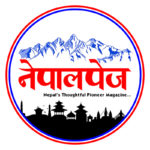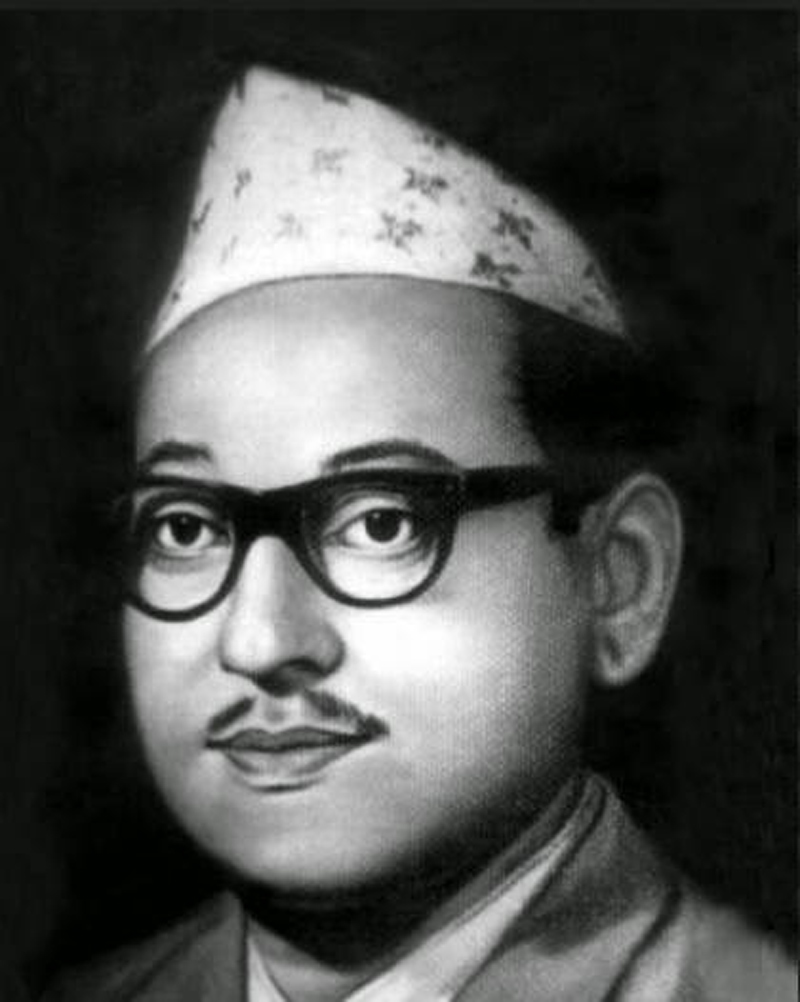Dr. Narad Bharadwaj– When Dr. Gangalal Tuladhar telephoned me some days back to inform that Puspalal Memorial Foundation had decided to confer its annual Puspalal Memorial Award on me, I could not believe my ears. Initially, I wondered how I deserved the prestigious award being given every year to people making substantial contribution in the field of history, culture and social change. And suddenly, as a flashback, I remembered an incident that had taken place a decade back.
In June 2009, former Prime Minister of Nepal and the then Secretary General of the CPN Madhav Kumar Nepal called me to CPN’s central office at Balkhu and produced from behind his table a thick volume of a handwritten manuscript and asked me if I could read the text. Puspalal Shrestha’s son Umesh Shrestha was also sitting at one corner of a sofa facing comrade Nepal. I took the manuscript and turn over a page to have a look. It was a cursive English handwriting which, at the first glance, looked like nothing more than a meaningless squiggle.
I was about to say no. However, when I pored over the text a bit more closely, I could read the text. I read out the first two paragraphs aloud. When he heard it, he asked me to stop and said that the manuscript was a rare document, probably a book, written by late Puspalal Shrestha waiting to be transcribed and published.
The pages were already in a bad shape; letters fading off, pages perforating due to erosion and the edges of the notebooks had started to disintegrate. The manuscript demanded careful handling and a considerable ability to decipher the words.
Spellings were no guide as the lines were mere scrawl with regular high and low lines resembling an ECG report. Words could be distinguished taking clue from the initial letter and the word environment. I have fairly extensive vocabulary of English language, which helped me distinguish words and ascribe meaning to the text.
Comrade Madhav Nepal requested me to transcribe the text in order to salvage the knowledge resource it contained and after finishing transcription, help publish it. It was a precious legacy of a great revolutionary and Marxist ideologue of Nepal who had dedicated his whole life in the study and research of Nepali history, class structure of the Nepali society, culture, languages and heritages of the past in his quest for freedom, democracy and the emancipation of the Nepali people.
Madhav Nepal said he was assigning this task to me because he thought I was ‘the most competent person in our party to do this job’. This made me feel proud and I decided to take up the challenge.
After starting transcription, I discovered that the texts were the quick notes taken by Puspalal during his study of historical evolution of the societies and cultures of the people of Nepal and other countries of the Indian sub-continent. It was not a book per se, but the notes revealed that he was preparing to write comprehensive history of Nepal and this region as a whole from a Marxist perspective.
During transcription of the text, I found that he was a voracious reader and analysed the historical events and episodes with a unique insight placing the role of the common people at the centre. He had a strong lure for viewing things in contemporary context and wanted to excavate the past to bring forth the unseen and unsung protagonists of social change.
His notes consisted of important and relevant information from various rare books authored by foreign writers not readily available for common readers. Some of the books such as Nepal and East India Company by BN Sanwal, Tibetan Civilization by R.A. Stein, Marx before Marxism by David McLellan, Linguistic Survey of India by GA Grierson to mention the few, throw light on his perspicacious choice of reading materials.
Comrade Puspalal Shrestha’s bibliography is extensive and encompassing. It provides guidance to readers and researchers willing to study the regional history of South, Central and East Asia. It covers materials which shed light into the evolving societies from primitive matriarchal society to the modern times.
These notes serve as rare resource to get a glimpse of our history, culture and social ethos coming into conflict with the alien value systems when European colonisers intruded into the social, political and cultural spheres of the Asian society leaving them in disarray.
Puspalal pinpoints how foreign historians have tended to ‘plant a perception that Nepal and India form a single cultural entity’. From vast knowledge resources, he selects materials which refute this and help construct a distinct characteristic of the Nepali social- cultural milieu shaped up by the constant interaction of diverse civilisational values that have evolved under the concrete objective conditions prevailing in the geo-political space we call Nepal.
According to Puspalal, history is not a narrative of the ruling elites. ‘History is a living social organisation in which the process of integration and disintegration of society goes on unabated’. He interpreted history through the view point of historical materialism and extolled people’s role as the catalytic agents for change
In his notes, Puspalal made immense contribution in structuralising Nepali history by digging out peripheral resources from the relevant information found in the history of Kashmir, Tibet, Sikkim, Bhutan and India.
He brings out many unknown or less known facts of Nepalese history up for study and analysis. In his notes taken from BA Sanwal’s book he mentions about the growing social unrest against slavery in Nepal. Lord Ellen Borough abolished slavery in India in 1843. But it existed in Nepal as form of cruel and inhuman act of social injustice till 1929.
As an act of revolt against the inhuman practice eleven Nepali slave girls fled from the household of their master and took asylum in Tirahut, a region under British Indian control. The Nepali masters demanded the return of these girls pleading that slavery was legal in Nepal, but the British Indian government refused to surrender the girls saying that it was the object of the British government to gradually suppress the slavery.
In another instance, Puspalal quotes important information from Padma Giri’s ‘An Account of Nepal ‘ which helps clear long held perception about Prithvi Narayan Shah’s atrocity against the inhabitants of Kirtipur following the conquest of this town. Some historians have written that Prithvi Narayan Shah resorted to a heinous act of cutting off nose tips and earlobes of entire population following his victory without basing their generalisations on factual evidences.
In his collection of bibliographical notes, Puspalal quotes Padma Giri mentioning that the nose tips and ears of 865 people were cut off by the two Bhotiyas commissioned by Prithvi Narayan Shah to punish the Kirtipurians. But later, Prithvi Narayan Shah got them executed as ‘they had done the job with excessive zeal’.
This historical evidence cannot expunge the stigma which Prithvi Narayan Shah has earned by letting him-self stoop low to gratify his base human instinct of revenge but it serves to set the record right compelling historical analysts to judge him on the merit of facts.
This manuscript has now been published under the title, ‘Puspalal: Notes on History’ by Pushpalal Memorial Foundation. It is a precious addition in the treasure house of historical knowledge of this region which future scholars and writers may benefit from.

(Dr. Bharadwaj is a freelance writer and holds PhD degree in ethno-history. He writes on history, foreign relations, and contemporary national and international politics, this article published in TheRisisng Nepal)




COMMENTS